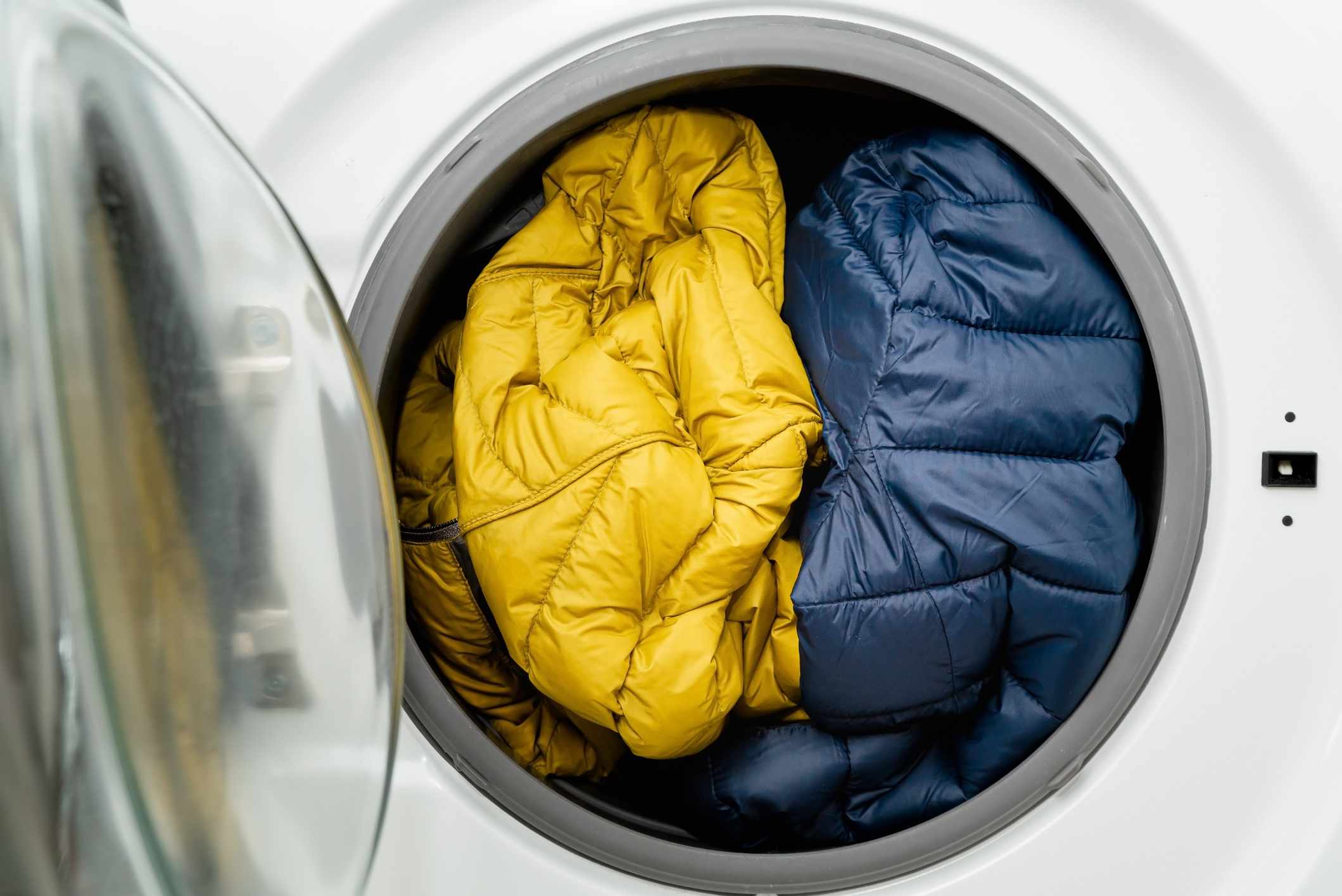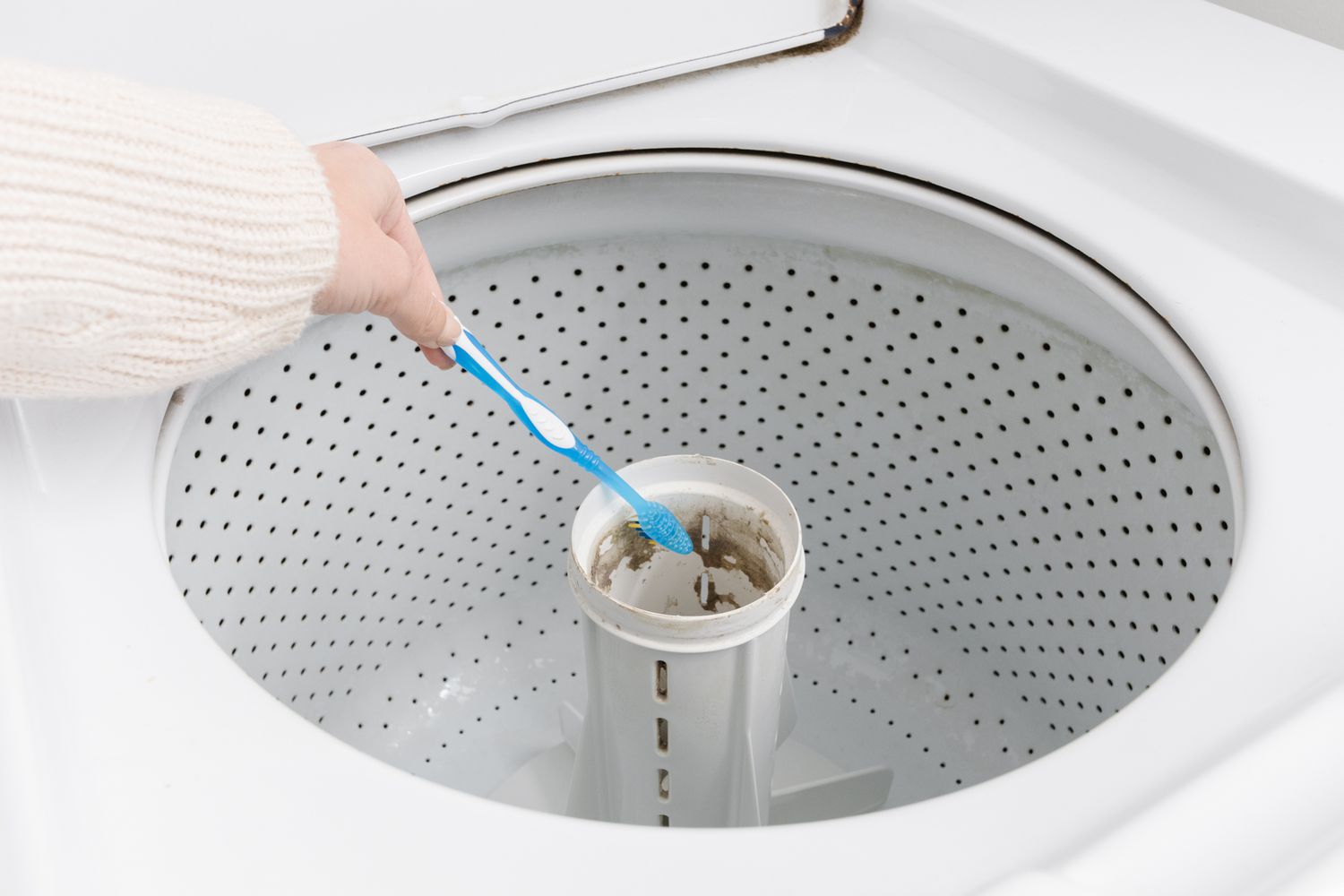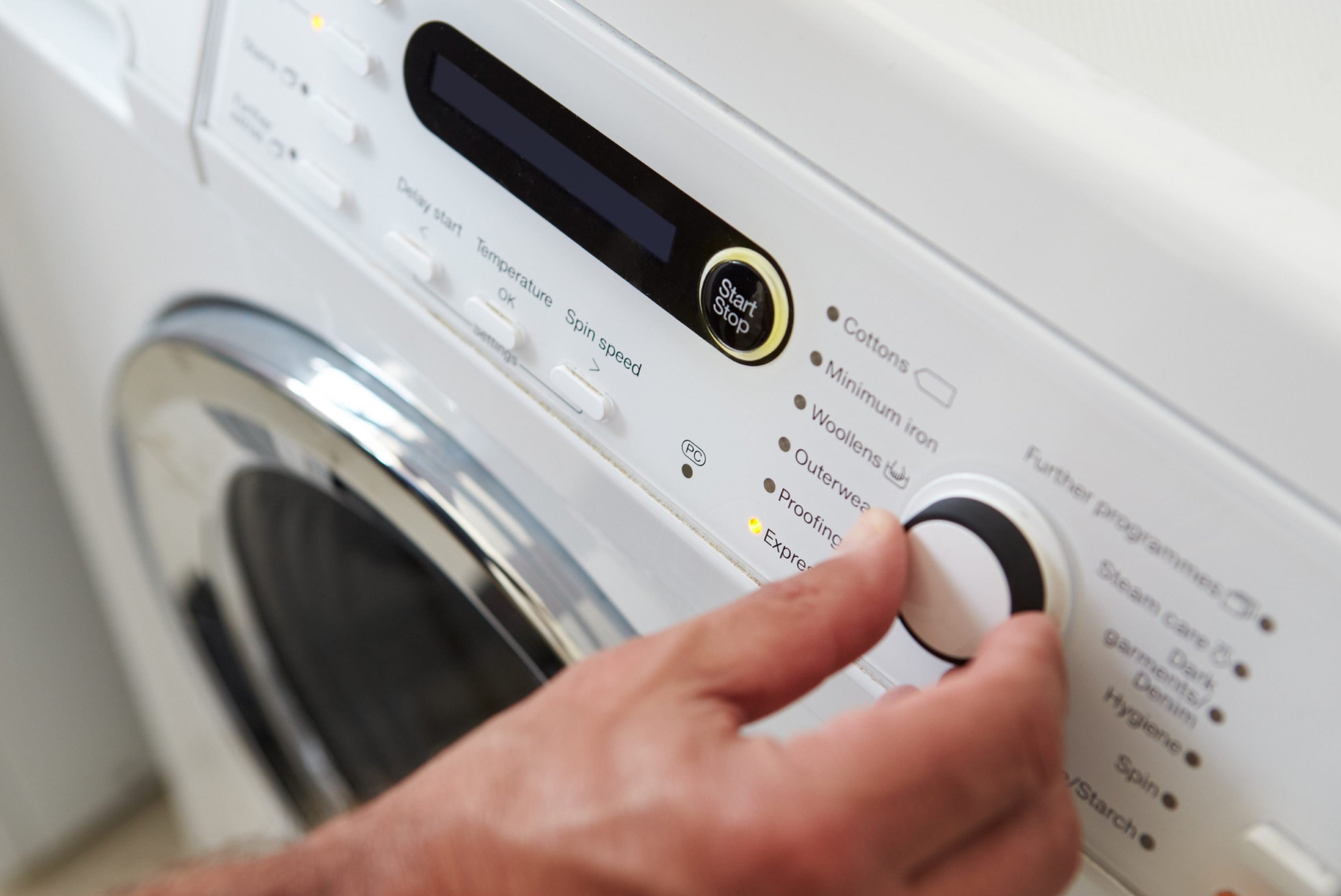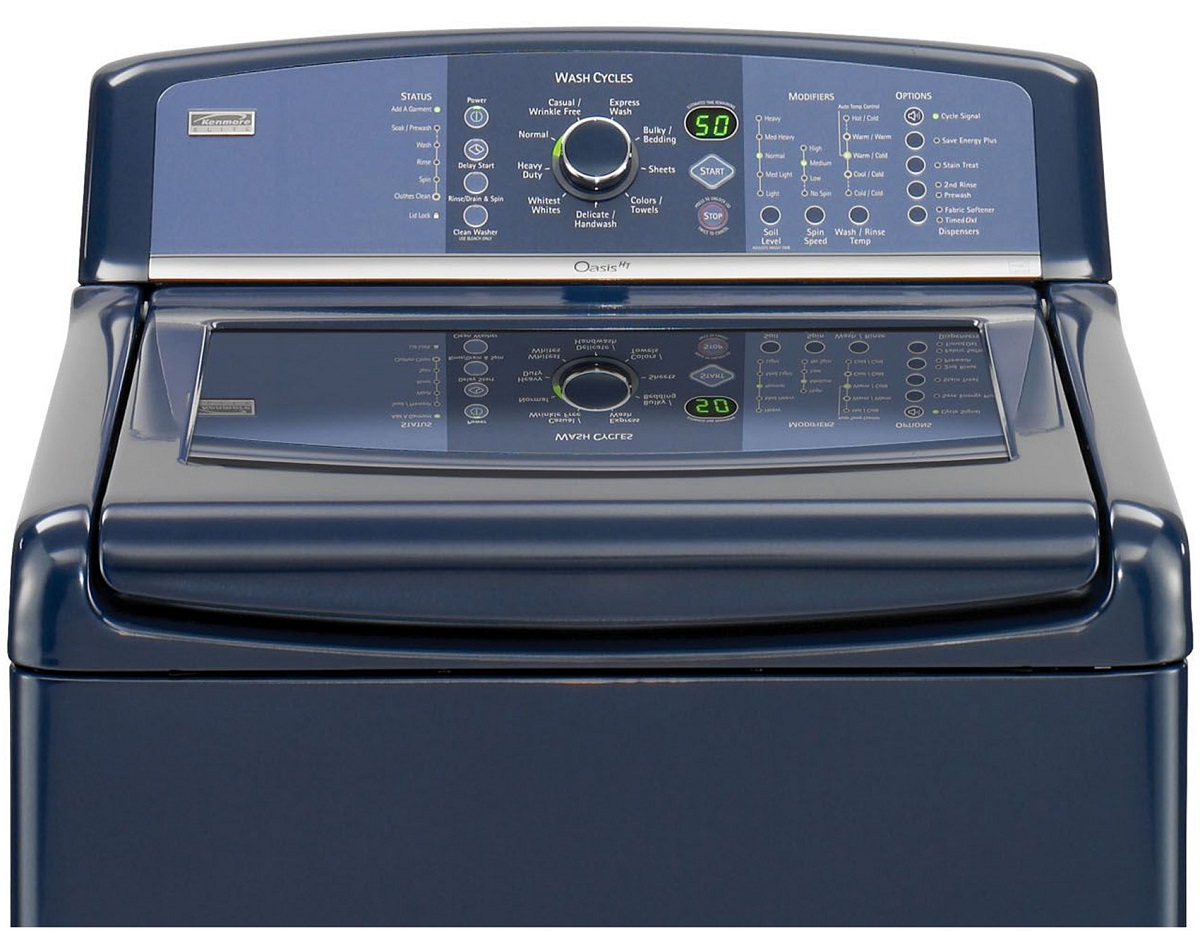Home>Home Appliances>Laundry Appliances>How To Wash A Coat In The Washing Machine


Laundry Appliances
How To Wash A Coat In The Washing Machine
Published: February 20, 2024
Learn how to properly wash a coat in the washing machine with our expert tips. Discover the best laundry appliances and techniques for a clean and fresh coat every time.
(Many of the links in this article redirect to a specific reviewed product. Your purchase of these products through affiliate links helps to generate commission for Storables.com, at no extra cost. Learn more)
Introduction
Washing a coat in a washing machine may seem like a straightforward task, but it requires careful consideration to ensure that the garment is properly cleaned without compromising its quality. Whether you're dealing with a winter coat, a raincoat, or a lightweight jacket, understanding the proper washing techniques is essential for maintaining the coat's appearance and functionality.
In this comprehensive guide, we will delve into the step-by-step process of washing a coat in a washing machine, covering everything from checking the care label to selecting the appropriate detergent and setting the washing machine for optimal results. By following these guidelines, you can effectively clean your coat while preserving its fabric, color, and overall integrity.
Washing a coat in a washing machine can be a convenient and efficient way to keep your outerwear fresh and clean. However, it's crucial to approach this task with caution and attention to detail. With the right knowledge and techniques, you can ensure that your coat emerges from the washing machine looking as good as new, ready to provide you with warmth, protection, or style for many more seasons to come.
Key Takeaways:
- Check the care label before washing your coat to avoid damage. Empty pockets, close fastenings, and choose the right detergent to preserve the coat’s quality and appearance.
- Set the washing machine to gentle settings and air dry the coat to maintain its shape and texture. Avoid direct heat and follow final tips for long-lasting outerwear.
Checking the Care Label
Before tossing your beloved coat into the washing machine, it's imperative to start by checking the care label. This small yet crucial piece of information holds the key to understanding how to properly care for your coat. The care label provides essential guidance on the specific cleaning methods and precautions that should be taken to maintain the garment's quality.
When examining the care label, look for symbols or written instructions that indicate whether the coat is suitable for machine washing. Additionally, take note of any temperature recommendations, such as the maximum wash and dry heat settings. These details will help you determine the appropriate washing conditions to prevent damage to the fabric or alterations to the coat's shape.
In some cases, the care label may advise against machine washing, indicating that the coat should be exclusively dry cleaned. If this is the case, it's crucial to adhere to the manufacturer's instructions to avoid potential shrinkage, color fading, or other adverse effects that can result from improper cleaning methods.
Furthermore, the care label may provide specific details regarding the type of detergent or cleaning agents that are safe to use. For instance, it may recommend mild or gentle detergents for delicate fabrics, or specify the avoidance of bleach or fabric softeners. By heeding these instructions, you can safeguard the coat from unnecessary wear and tear caused by harsh chemicals.
In essence, the care label serves as a personalized roadmap for maintaining the longevity and appearance of your coat. By carefully reviewing and understanding the information it provides, you can make informed decisions about the most suitable cleaning approach, ensuring that your coat remains in top condition for years to come.
Preparing the Coat for Washing
Before initiating the washing process, it's essential to prepare the coat adequately to ensure optimal cleaning results and prevent potential damage. Here's a detailed breakdown of the steps involved in preparing the coat for washing:
-
Emptying Pockets: Begin by thoroughly checking the coat for any items left in the pockets. Remove any loose change, receipts, or other small items that may have been overlooked. This step is crucial to prevent these items from causing damage to the coat or the washing machine during the cleaning cycle.
-
Closing Fastenings: Next, ensure that all zippers, buttons, and fastenings on the coat are securely closed. This precaution helps protect the coat's delicate fabrics and prevents them from getting caught or entangled with other garments in the washing machine.
-
Turning Inside Out: For coats made from delicate or embellished materials, turning the garment inside out can help minimize friction and reduce the risk of surface damage during the washing process. This simple step can preserve the outer appearance of the coat and protect any decorative elements or trims from abrasion.
-
Removing Detachable Elements: If the coat features detachable fur trims, hoods, or other accessories, it's advisable to remove them before washing. This prevents these components from getting tangled or damaged and allows for a more thorough and even cleaning of the coat's main body.
-
Addressing Stains: Prior to washing, take a moment to treat any visible stains or spots on the coat. Use a gentle stain remover or a mild detergent to pre-treat the affected areas, following the product's instructions for best results. This targeted approach can help lift stubborn stains and ensure that the coat emerges from the washing machine looking fresh and clean.
By meticulously preparing the coat for washing, you can set the stage for a successful cleaning process while safeguarding the garment from potential harm. These proactive measures contribute to maintaining the coat's quality and appearance, allowing you to enjoy its warmth and style with confidence.
Choosing the Right Detergent
Selecting the appropriate detergent is a critical aspect of washing a coat in a washing machine. The choice of detergent can significantly impact the cleanliness and longevity of the garment. When it comes to coats, especially those made from delicate or specialized fabrics, opting for a gentle and suitable detergent is paramount.
For most coats, especially those with synthetic or natural fiber compositions, a mild liquid detergent designed for delicate fabrics is an ideal choice. These detergents are formulated to effectively cleanse the garment without causing damage or diminishing the fabric's integrity. They are free from harsh chemicals and additives that could potentially harm the coat's fibers or alter its color.
In the case of waterproof or water-resistant coats, it's essential to use a specialized detergent specifically formulated for such garments. These detergents are tailored to maintain the waterproofing properties of the fabric while effectively removing dirt and grime. Using a standard detergent on waterproof coats can compromise their water-repellent capabilities, leading to reduced performance in adverse weather conditions.
For coats with down or synthetic insulation, selecting a detergent that is designed for use with insulated garments is crucial. These detergents are formulated to clean the garment without leaving behind any residue that could affect the insulation's loft or performance. Additionally, they help preserve the natural oils in down feathers, ensuring that the coat retains its insulating properties after washing.
When dealing with heavily soiled or odorous coats, choosing a detergent with odor-fighting or stain-removing properties can be beneficial. These detergents are equipped to tackle tough stains and eliminate unpleasant odors, rejuvenating the coat and leaving it fresh and clean.
In all cases, it's important to follow the detergent manufacturer's guidelines regarding the appropriate amount to use based on the load size and water hardness. Using the correct amount of detergent helps prevent residue buildup on the coat and ensures thorough rinsing during the washing cycle.
By carefully selecting the right detergent tailored to the specific needs of the coat, you can effectively cleanse the garment while preserving its quality and functionality. This thoughtful approach to detergent selection contributes to maintaining the coat's appearance and performance, allowing you to enjoy its benefits for an extended period.
Setting the Washing Machine
Properly configuring the washing machine is a crucial step in ensuring the effective and safe cleaning of your coat. By following the recommended settings, you can optimize the washing process and minimize the risk of damage to the garment. Here's a detailed guide on setting the washing machine for washing your coat:
Read more: How To Reset A Washer
Water Temperature:
Selecting the appropriate water temperature is essential for achieving optimal cleaning results while safeguarding the coat's fabric. For most coats, especially those made from durable materials, using cold water is recommended. Cold water helps prevent color fading, shrinkage, and damage to delicate fibers. However, if the care label specifies a different temperature or if the coat is heavily soiled, using a gentle warm water setting may be suitable. It's important to adhere to the temperature guidelines provided on the care label to avoid compromising the coat's quality.
Wash Cycle:
Choosing the right wash cycle is crucial for effectively cleaning the coat while minimizing agitation. Opt for a gentle or delicate cycle to ensure that the garment is treated with care during the washing process. These cycles feature slower and smoother movements, reducing the risk of damage to the coat's fabric, seams, and embellishments. Avoid using intense or high-speed cycles, as they can subject the coat to excessive friction and stress, potentially leading to unwanted wear and tear.
Spin Speed:
When setting the spin speed, opt for a low or medium setting to prevent excessive wringing and twisting of the coat. High-speed spins can place undue stress on the fabric and seams, potentially causing distortion or damage. By selecting a lower spin speed, you can minimize the impact on the coat's structure while effectively removing excess water before the drying process.
Detergent Dispensing:
Properly dispensing the detergent is essential for ensuring thorough and even cleaning of the coat. Add the recommended amount of detergent based on the load size and water hardness, following the guidelines provided by the detergent manufacturer. Avoid overloading the washing machine with detergent, as this can lead to residue buildup on the coat and affect the rinsing process. Additionally, if the care label specifies the use of a fabric conditioner, add it during the appropriate dispensing phase to maintain the coat's softness and texture.
By meticulously configuring the washing machine settings in accordance with the care label and the specific requirements of the coat, you can facilitate a gentle yet effective cleaning process. These tailored settings contribute to preserving the coat's quality and appearance, allowing you to enjoy its warmth and style with confidence after each wash.
Read more: How To Calibrate Whirlpool Washer
Drying the Coat
After the washing cycle is complete, the next crucial step in the coat care process is proper drying. The method of drying plays a significant role in maintaining the coat's shape, texture, and overall quality. Here's a detailed guide on effectively drying your coat after it has been washed in the machine:
Removing Excess Water:
Before proceeding with the drying process, gently remove the coat from the washing machine and carefully squeeze out any excess water. Avoid wringing or twisting the coat, as this can distort its shape and damage the fabric. Instead, gently press the garment against the sides of the washing machine or use a clean, dry towel to absorb the excess moisture.
Air Drying:
For most coats, air drying is the preferred method to ensure gentle and even drying without subjecting the garment to excessive heat. Lay the coat flat on a clean, dry towel or a breathable drying rack in a well-ventilated area. Ensure that the coat is spread out evenly to maintain its shape and allow air to circulate around it.
Avoiding Direct Heat:
It's crucial to avoid exposing the coat to direct heat sources such as radiators, heaters, or direct sunlight, as excessive heat can cause the fabric to become brittle, fade, or lose its natural luster. Instead, choose a cool, shaded area for air drying to protect the coat from potential heat damage.
Read more: How To Reset A GE Washer
Fluffing and Reshaping:
During the drying process, periodically fluff and reshape the coat to prevent any areas from becoming flattened or misshapen. Gently smooth out any wrinkles or creases, and ensure that the coat's seams and edges are properly aligned to maintain its original silhouette.
Patience and Observation:
Allow the coat to air dry naturally, and exercise patience throughout the process. Depending on the coat's fabric and thickness, drying times may vary. Periodically check the coat's progress and ensure that it is drying evenly and without any signs of moisture retention.
By following these meticulous drying techniques, you can effectively preserve the coat's structure, texture, and overall integrity. This thoughtful approach to drying contributes to maintaining the coat's appearance and functionality, ensuring that it remains a reliable and stylish outerwear option for many seasons to come.
Final Tips and Considerations
-
Inspect the coat after washing to ensure that all stains have been effectively removed. If any stubborn stains persist, consider re-treating them before proceeding with the drying process.
-
Avoid hanging heavy or water-laden coats on narrow hangers, as this can cause the shoulders to stretch and lose their shape. Instead, opt for broad, padded hangers to support the coat's weight and maintain its structure.
-
For coats with fur trims, gently fluff the fur after drying to restore its natural appearance. Use a wide-toothed comb or a specialized fur brush to carefully detangle and rejuvenate the fur without causing damage.
-
Store the coat in a well-ventilated area with ample space to prevent overcrowding and wrinkling. Avoid storing the coat in plastic bags or containers, as this can trap moisture and lead to musty odors or mildew growth.
-
Consider applying a fabric protectant or waterproofing treatment after washing to enhance the coat's resistance to moisture and stains. Always follow the manufacturer's instructions when using these products to ensure proper application.
-
If the coat features intricate embellishments or delicate trims, consider hand washing or spot cleaning to preserve these details. Refer to the care label for specific guidance on caring for embellished garments.
-
Regularly inspect the coat for any signs of wear, loose threads, or damage. Addressing minor issues promptly can prevent them from escalating and help prolong the coat's lifespan.
-
When in doubt, consult a professional dry cleaner for specialized care and maintenance of your coat. Professional cleaning services can offer tailored treatments to address the unique requirements of different coat styles and fabrics.
By incorporating these final tips and considerations into your coat care routine, you can ensure that your garment receives the attention and maintenance it deserves, allowing you to enjoy its comfort and style for years to come.
Frequently Asked Questions about How To Wash A Coat In The Washing Machine
Was this page helpful?
At Storables.com, we guarantee accurate and reliable information. Our content, validated by Expert Board Contributors, is crafted following stringent Editorial Policies. We're committed to providing you with well-researched, expert-backed insights for all your informational needs.













0 thoughts on “How To Wash A Coat In The Washing Machine”